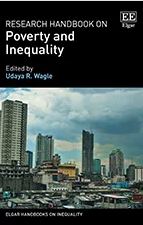
Are women poorer? A cross-country analysis of gender differentials in multidimensional poverty
Burchi, Francesco / Daniele MalerbaExternal Publications (2023)
in: Udaya R. Wagle (ed.), Research Handbook on Poverty and Inequality, Cheltenham: Edward Elgar Publishing, 103-117
DOI: https://doi.org/10.4337/9781800882300.00014
Information
Despite the large demand for gender-disaggregated poverty statistics, so far it has been impossible to assess gender differentials in poverty for several countries. This is mostly because the available indices of income and multidimensional poverty are computed at the household level. The chapter contributes to fill this research gap by adopting two new indices of multidimensional poverty. These indices have two major strengths: they are individual-based and they incorporate key dimensions for women, primarily education and work. Using recent data, this chapter assesses gender disparities in poverty for 76 low- and middle-income countries. The results show that almost everywhere poverty has predominantly a female face: on average, female poverty is about 80 percent higher than male poverty. The largest gender disparities are found in two regions: the Middle East and North Africa and South Asia. Finally, it is mostly in the area of employment that women face higher deprivations than men.


